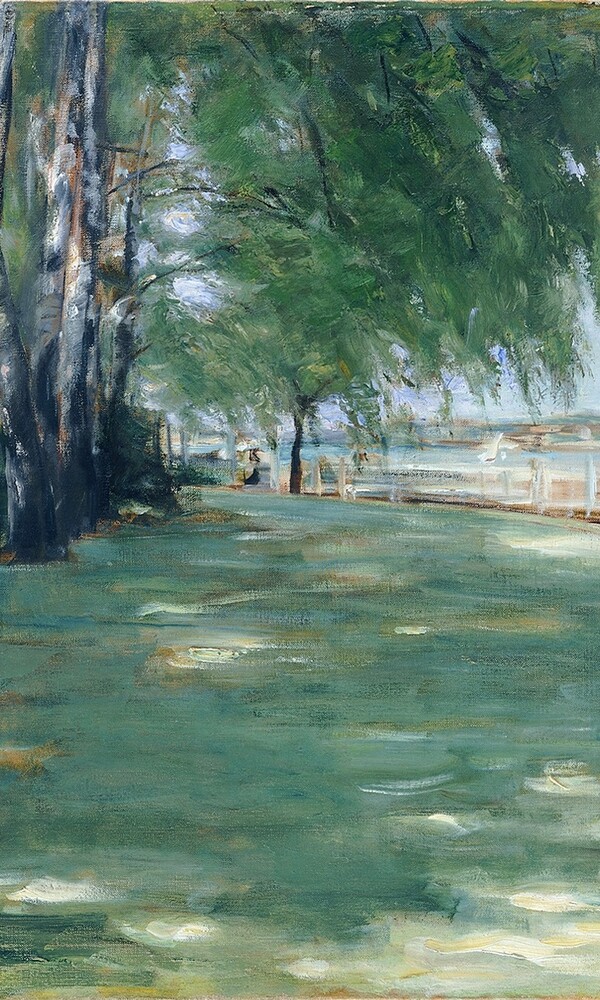With the exhibition »In Max Liebermann’s Garden« the Hamburger Kunsthalle presents for the first time an overview of works created by Max Liebermann (1847-1935) in Berlin-Wannsee. The show centres on the radiantly colourful paintings and pastels in which the artist captured summertime views of his garden and life by Lake Wannsee.
In 1909 Max Liebermann was able to purchase one of the last available lakeside plots by the Grosser Wannsee. The Berlin architect Paul Baumgarten was commissioned to design the house. At Liebermann’s request, Baumgarten based his design on the villas on the banks of the River Elbe in Hamburg, which the artist knew from frequent visits to the city. In 1910 Liebermann and his family were already able to move into his »castle by the lake«. In the summerhouse studio he painted the first garden pictures.
Alfred Lichtwark, the director of the Hamburger Kunsthalle and a friend of Liebermann’s, was involved with planning and designing the garden in Wannsee from the outset. Together with Liebermann and the artist’s daughter he devised a modern garden that satisfied the aesthetic demands of garden design reform and also offered the possibility of productive use.
The summer residence became Liebermann’s country refuge, a place to which the busy painter gladly retreated. When the First World War made his annual study trips to Holland impossible, the Wannsee villa became his permanent home during the summer months. It was here, in the period up to the early 1930s, that Liebermann completed more than two hundred studies and paintings of the garden, works that show the artist at the peak of his preoccupation with the theme of nature. Besides views of his garden, Liebermann also painted numerous family portraits in Wannsee.
Now, almost seventy years after the death of Max Liebermann, the Hamburger Kunsthalle offers visitors the chance to view over 80 of the paintings and pastels created in Wannsee that have been reunited for this exhibition. Additional documentary material illustrates the eventful history of the villa and garden in Wannsee.
A 224-page, fully illustrated exhibition catalogue was being published by Nicolai Verlag Berlin.
